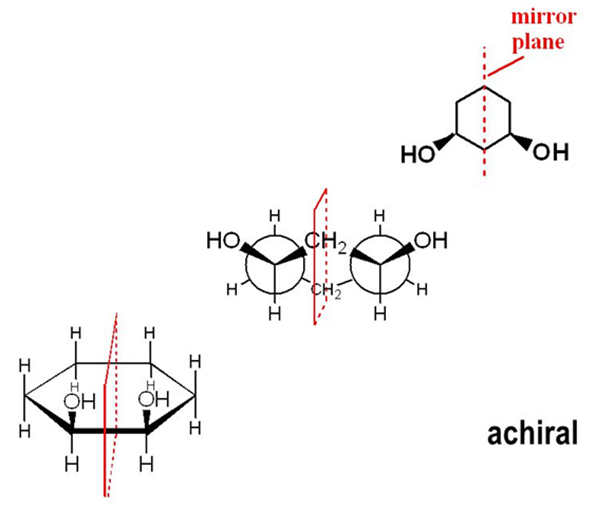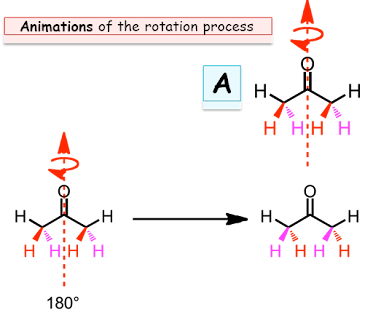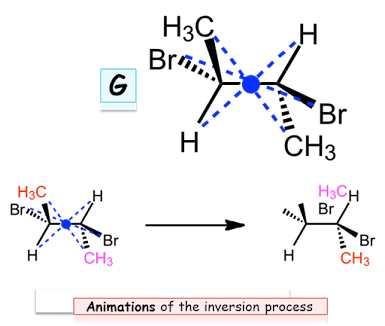Elements of Symmetry
Session Objectives
By the end of this
session, students will be able to:
• What are elements of symmetry?
• Types of symmetry
Symmetry
and Stereochemistry
• There are three elements of symmetry that a
molecule may possess…
1. Rotation
2. Reflection
3. Inversion
Symmetry Operations: Reflection
• Symmetry
operations are spatial transformations (rotations,
reflections, inversions).
• A molecule is said to possess a symmetry element if the
molecule is unchanged in appearance after applying the symmetry operation
corresponding to the symmetry element.
• The blue plane is a plane of symmetry of A.
• The operation of reflection (М) involves projection
of each atom onto the plane, followed by movement through the plane to a
distance equal to the projection distance.
• Reflection through the plane is a symmetry operation on A.
• Although the red and
magenta H’s have changed places, the
molecule looks the same.
• We say that A possesses reflection symmetry.
• Animations of the reflection process
Elements
of symmetry
Symmetry Operations: Rotation
• A molecule is said to possess a symmetry element if the
molecule is unchanged in appearance after applying the symmetry operation
corresponding to the symmetry element.
• The red axis is an axis of symmetry of A.
• The operation of rotation (Cn) involves
rotation of the molecule 360/n degrees about an axis.
• The axis shown is a “C2” axis.
• Rotation about the axis is a symmetry operation on A.
• Although the red and magenta H’s have changed places, the
molecule looks the same.
• We say that A possesses 2-fold rotational symmetry.
Elements
of symmetry
Symmetry Operations: Inversion
• A molecule is said to possess a symmetry element if the
molecule is unchanged in appearance after applying the symmetry operation
corresponding to the symmetry element.
• The blue point is an inversion center of G.
• The operation of inversion (i) involves the
projection of each atom onto a point at the center of the molecule, followed by
movement through the point to a distance equal to the projection distance.
• Inversion through the point is a symmetry operation on
G.
• Although inversion exchanges all three groups attached to
the central carbon, the molecule looks the same. We say that G possesses
inversion symmetry.
Alternating
axis of symmetry (Sn) or Rotation reflection axis of Symmetry or improper axis
of Symmetry
• A molecular has an alternating axis of symmetry of order
(n) if rotation about the axis by 360/n degree following by reflaction in a
plane perpendicular to this axis produces an equivalent structure.
Summary
• Chirality is only the criteria for optical isomerism
• The molecule should lack these elements of symmetry to
possess optical isomerism
• Different types of symmetry
Plane of
symmetry – reflection
Axis of
symmetry – rotation
Centre of
symmetry – inversion centre
Alternating
axis of symmetry





